Sorry This Is So Late (Mourning Braids)
The downside of always weaving data is that there's less place to just screw around with technique. I tried introducing a few leno twists into the end of my Gideon the Ninth weaving, but they didn't really work out like I'd hoped.
I packed my knitters loom with me on a trip to visit my father between Christmas and New Year, and I told myself emphatically, "No data, just practice." Except I cleaned out my bedroom closet in a fit of organizational frenzy right before we left, and I found a bag of fabric scraps.
In late March 2020, Jacque Wernimont started a COVID project with mourning braids. I saw it on Twitter (as one did then), and offered to make braids too, out of the fabric scraps from the masks I was making at the time. Strangely, I don't have any photos, but one of the most vivid-bright moments I still have from those times that my memory blurred to a point approaching erasure is sitting underneath a pink flowering bush on our back patio, watching numbly as the kids (then 6, 4, and almost 2) played, braiding these fabric scraps. I always meant to send them to Jacque, and I even got her address to do it. It never happened. But I also couldn't bring myself to get rid of these scraps; they were pieces of something I really seriously meant to finish, and once I found them again, I had to do something with them.
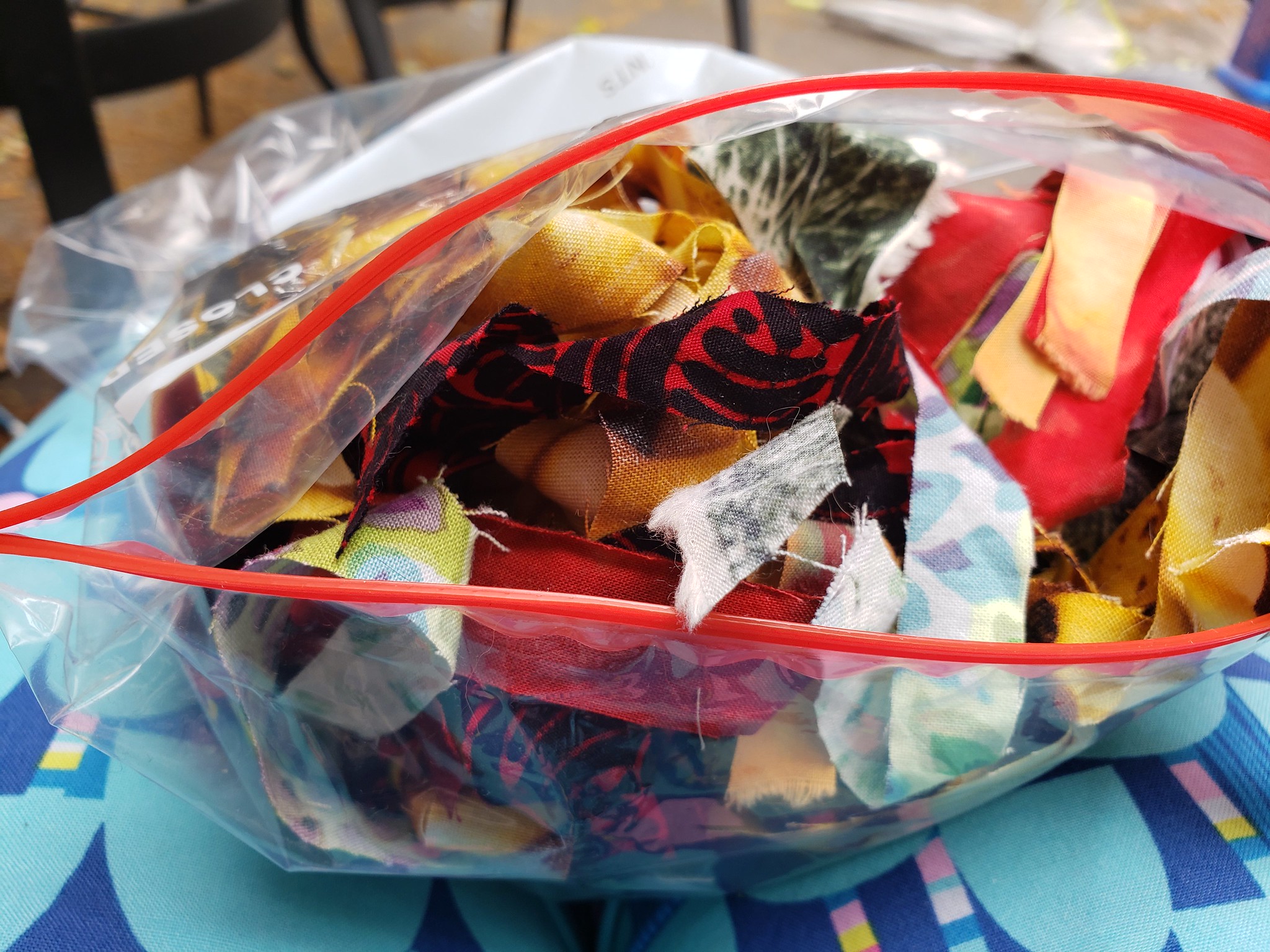
Spring 2020 was one of the darkest points of my life. There were lots of new projects over that next year, desperate scrabbling for some kind of life raft. Most of them didn't go anywhere, but I've struggled with actually putting them down. The scraps were simpler than many to sort out their disposition. Even if I was trying to deliberately not "do data" with my practice weaving, I could do vibes. On the giant kitchen island at my father's house, I warped the loom in shades of pink, red, orange, and brown -- a variegated pink cotton I had lying around, and another variegated sock yarn in desert colors. And then I set about weaving, trying to use the number 4 as often as possible. After all, these braids were 4 years late.
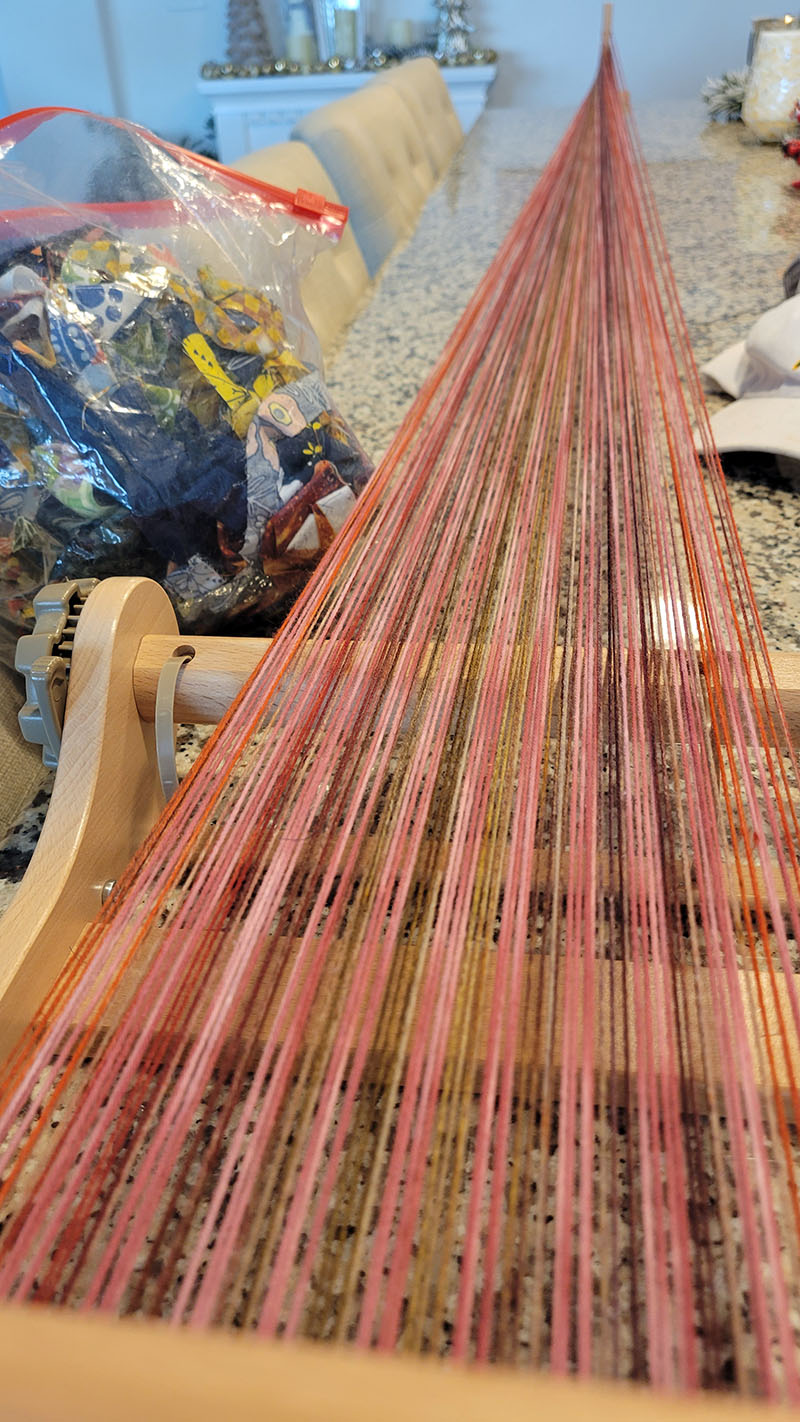
Braids and remnants
Weaving made me confront how few braids I had actually managed to make in 2020, as much as I remembered it being a major activity for a while. I didn't want to braid more to give the impression I'd done more than I had, so I also used fabric strips from the bag, representing some of my favorites. Choosing the fabric strips was an exercise in nostalgia; I used a few strips of a giant sheet that I used as the lining for many masks.
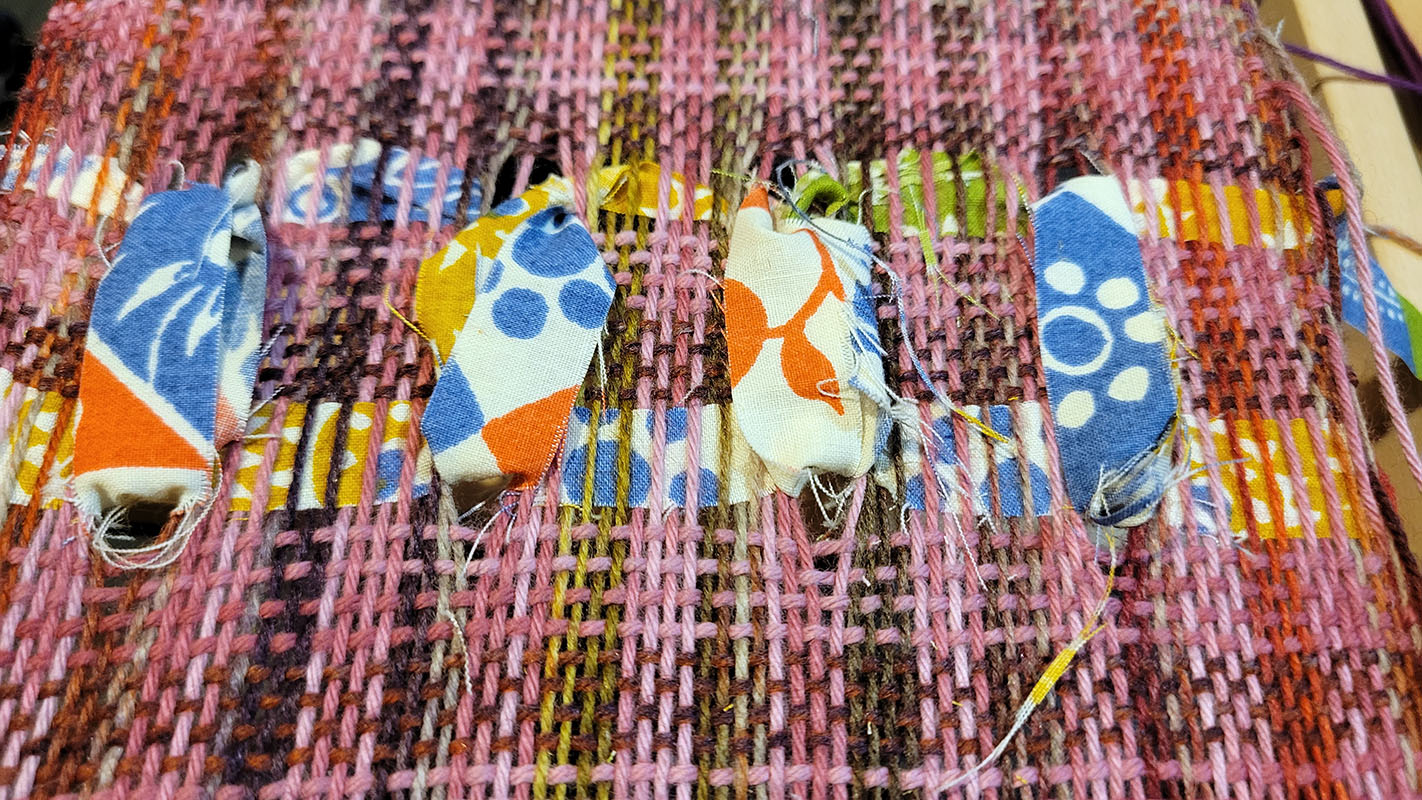
One of my first and favorite masks used a banana print, and I had a strip of that in the bag
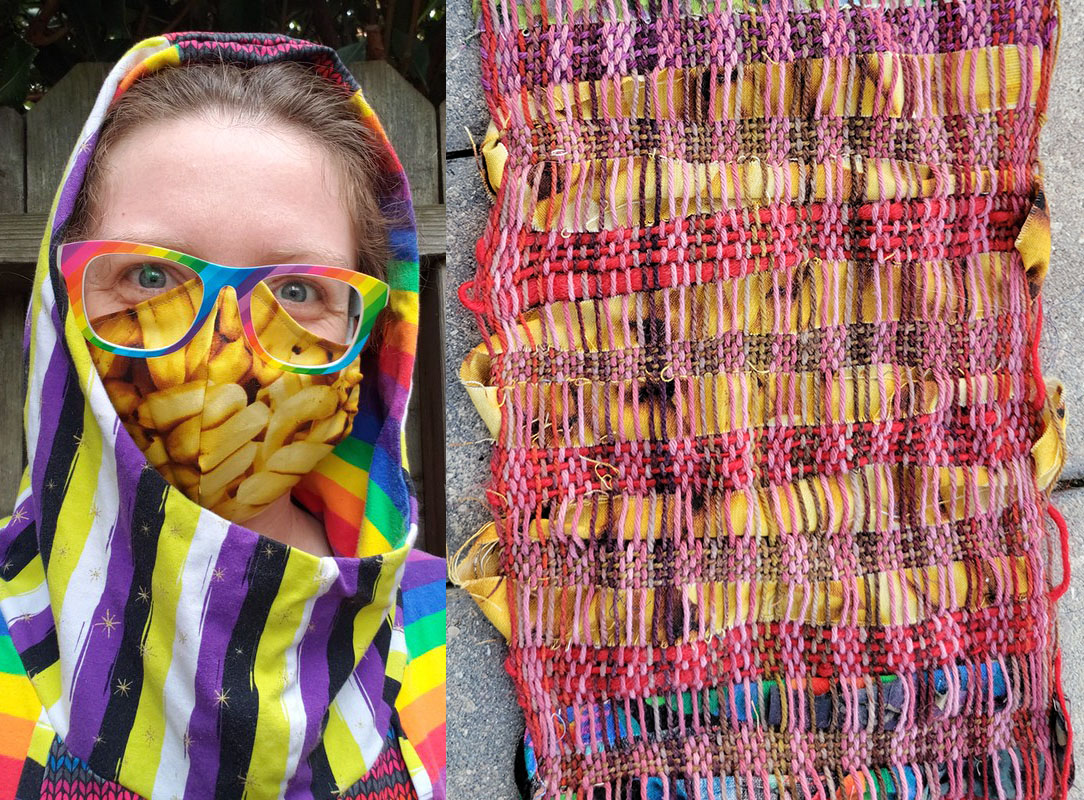
I did a few masks in a fun neon cat print I inherited from an aunt-in-law, and enjoyed sticking in a couple picks of cat head. That same aunt-in-law passed away in 2022, and the last strip of fabric was something she'd hand-dyed.
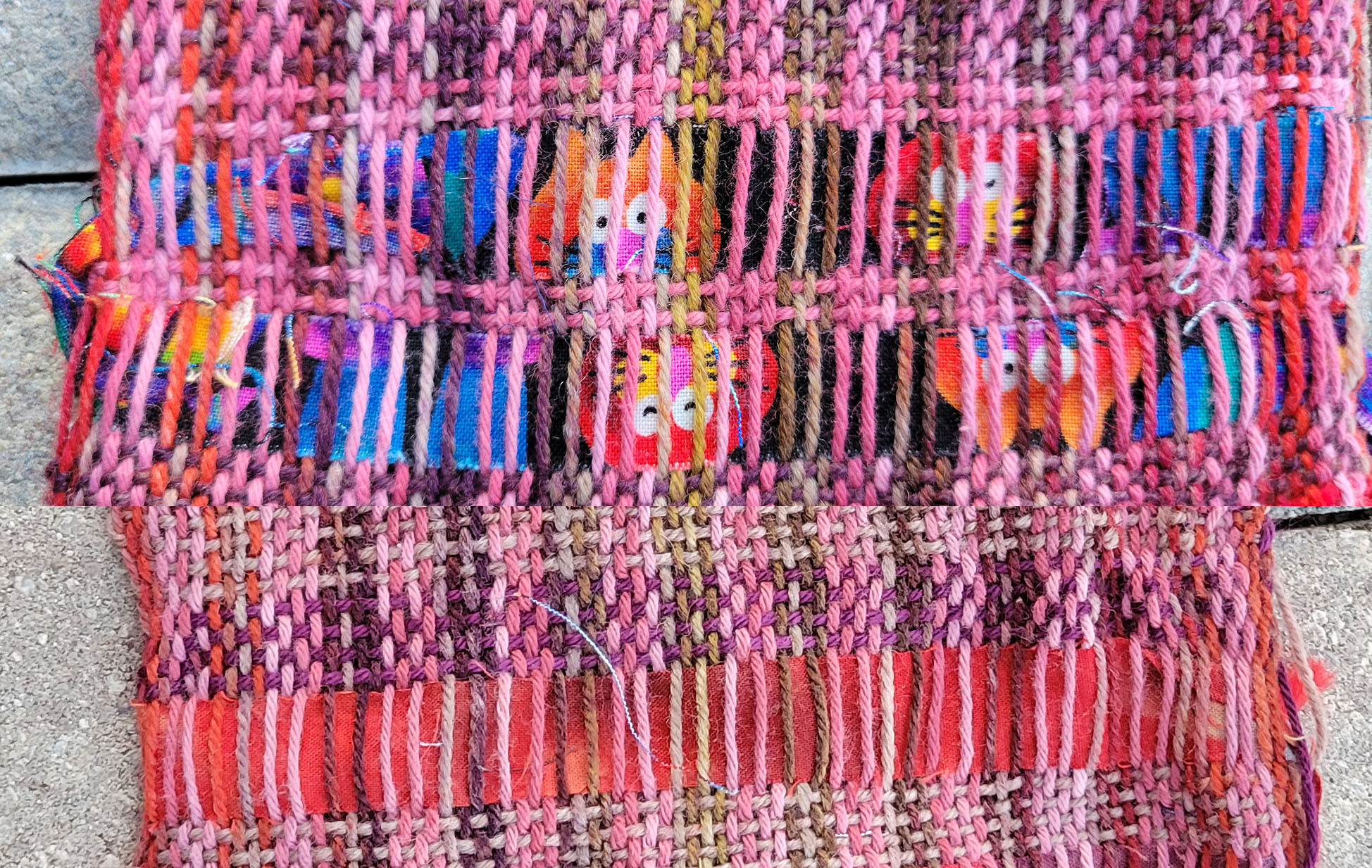
What I learned
- Leno twists try my patience, but I can get into the flow of it in the right mood.

- Weft floats (with a pickup stick behind the reed) are more satisfying than leno when it comes to payoff-per-pickup-stick, but keeping track of more complicated patterns continues to not be my strong suit

- I like soumak with a highly variegated-weight yarn; I used singles from one of my first yarn spinning projects, which were all over the place. When I tried it with a commercial yarn, I found the results boring and not worth the effort.
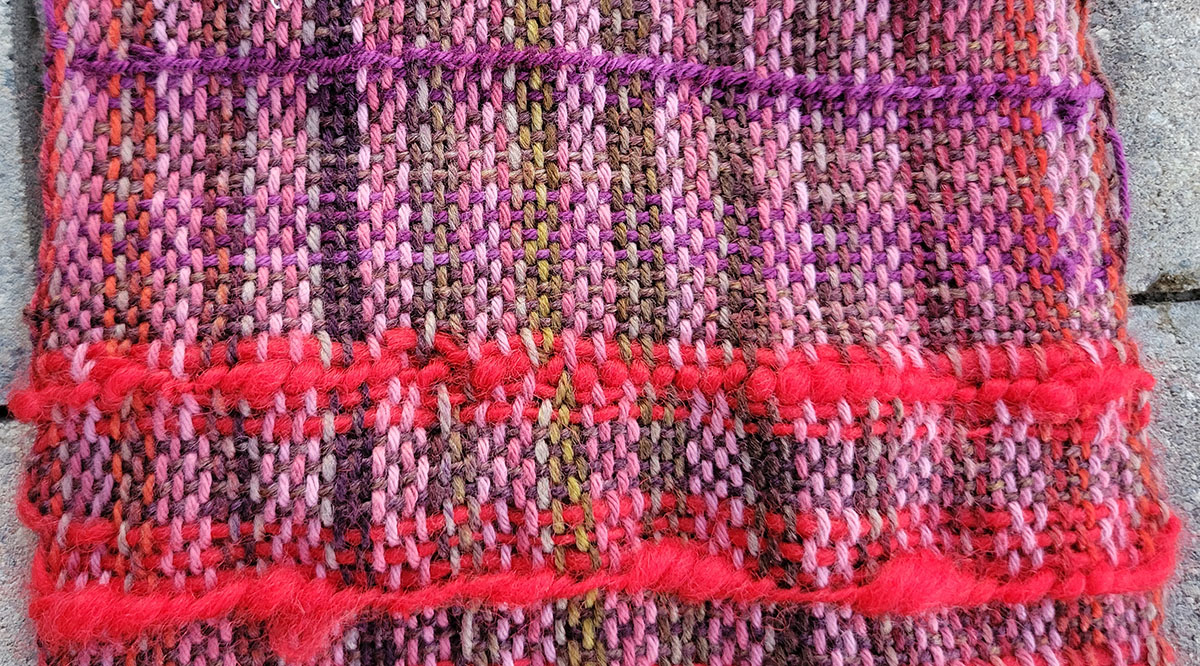
- I fell in love with Danish medallions; I quickly used all of the braids I created in 2020 in Danish medallions, and now I want to use the medallions in a major way in my next weaving.
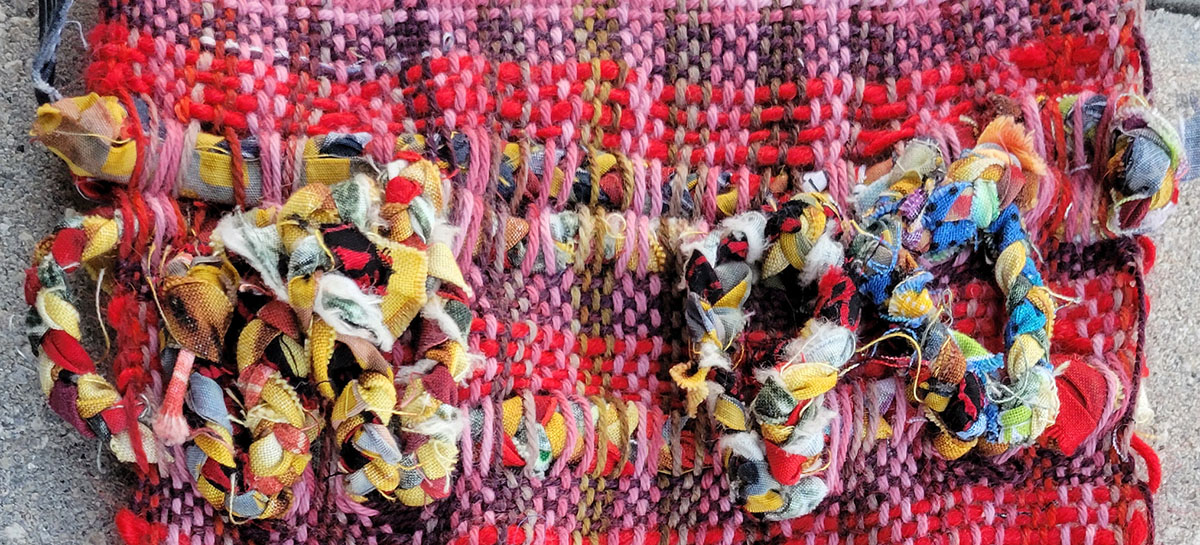
- Looped pile was kind of annoying to do, but it might be less so with a long chunky knitting needle instead of trying to hack it with a crochet hook.
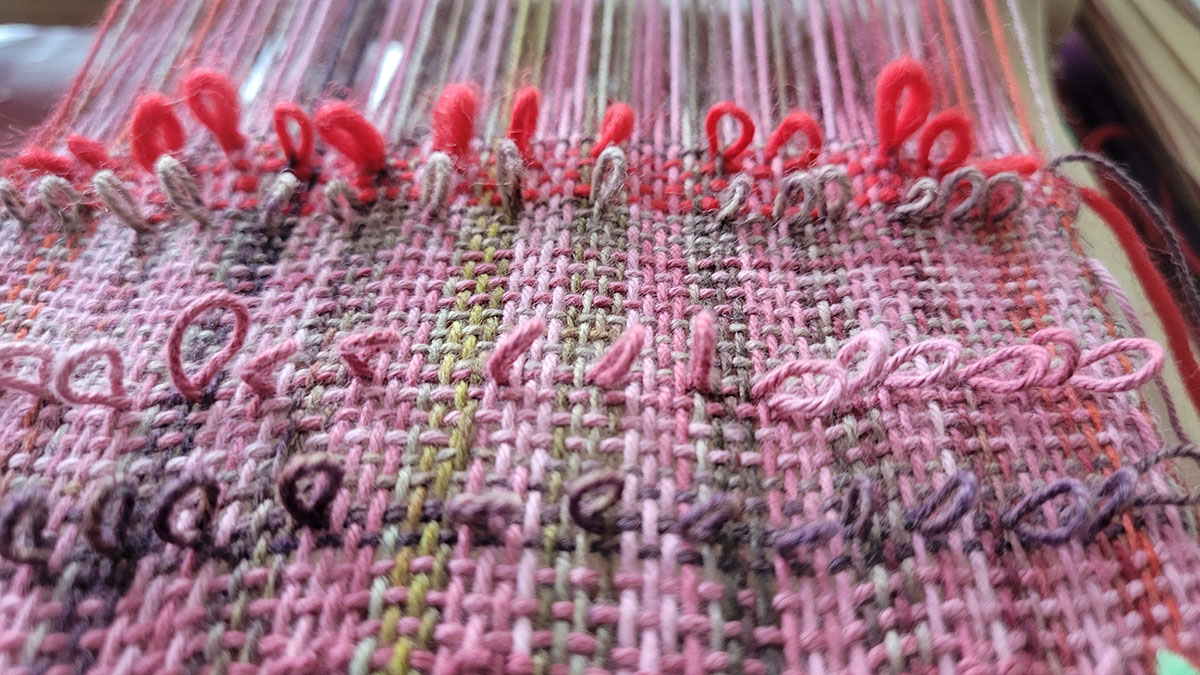
- For whatever reason, I needed to find a video to wrap my head around Brooks bouquet, but was pretty happy with the result once I did.
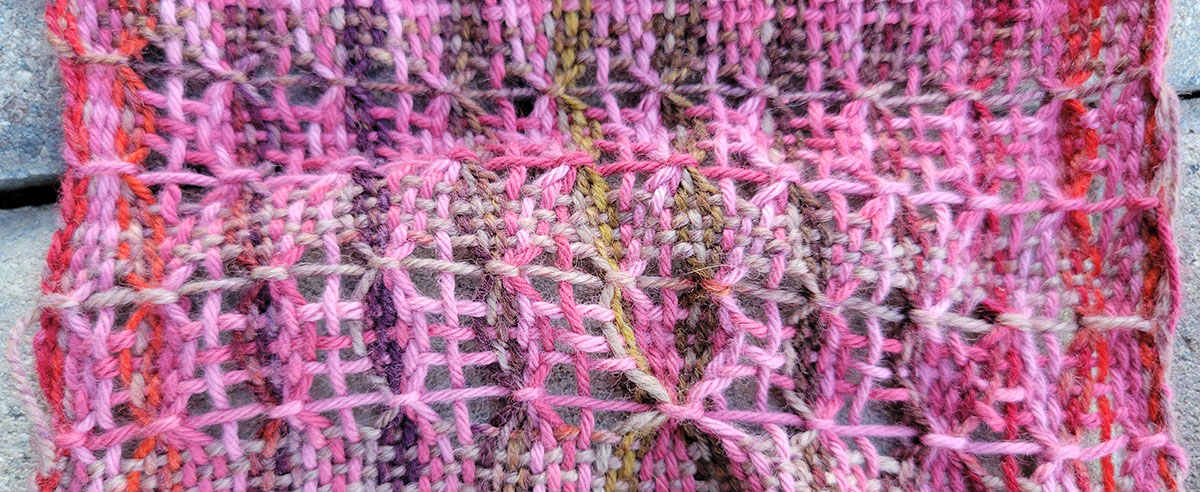
- Spanish lace was a little hit-or-miss depending on the weft; I liked it less with fabric strips and the thinner section of handspun, but with chunkier handspun I was pretty happy with it.
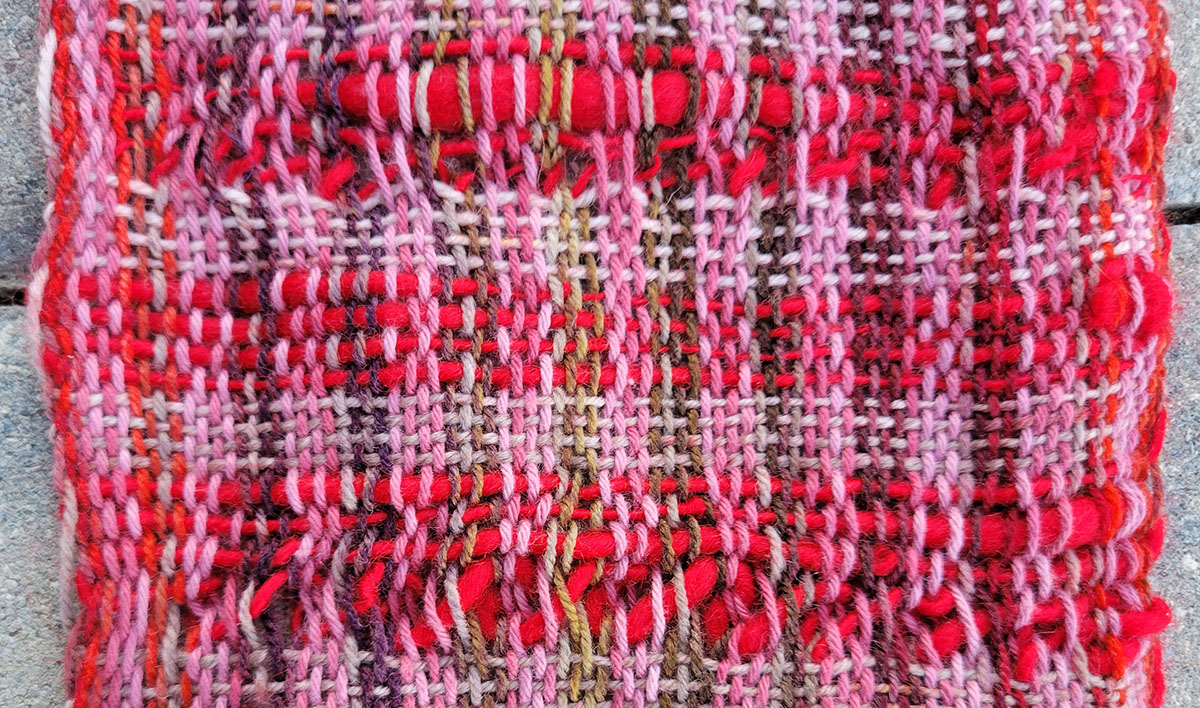
Washing
Here's the weaving after I finished it, but before washing:

In keeping with the experimental goals of the weaving, I tossed it in the washing machine and dryer along with the laundry. The last couple weavings I hand-washed very gently then wet-blocked, but since this weaving was mostly cotton, superwash merino, and cotton fabric strips, I wanted to see what would happen. The handspun definitely shrunk, crinkling the sections of the weaving where I'd used the handspun and there wasn't some other element (like cotton fabric strips) maintaining the width.

Washing also had an uneven impact on the looped pile; the handspun looped pile sort of felted into uneven blobs. So that was good to discover.
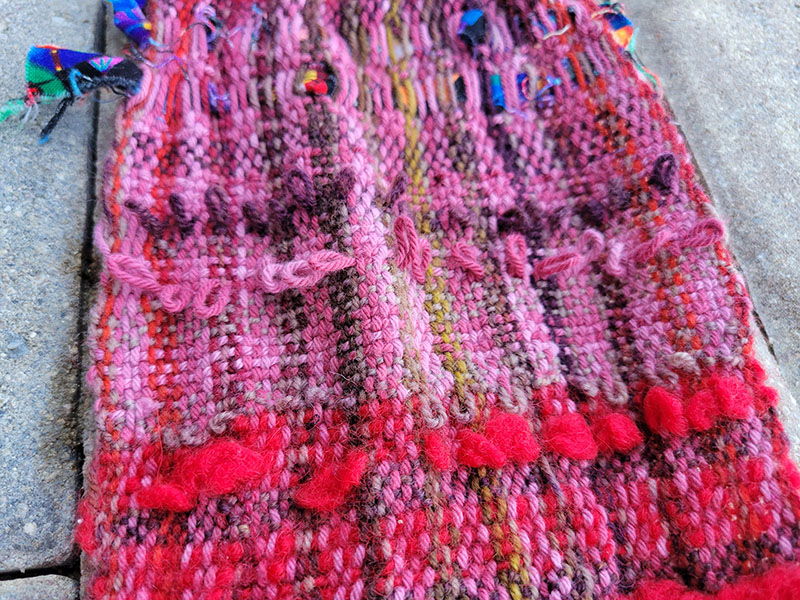
In conclusion
One thing I know about myself is that I need the things I make to mean something, or it's hard to motivate myself to do them. Weaving data meets that requirement easily. But pausing on that to have a completely blank canvas for a few days to try things out was very much worthwhile, and worth trying again. I've got a new bag of tricks that are already getting planned into the next weaving -- and honestly, I may try to go back and incorporate a few into the end of the AI weaving too.